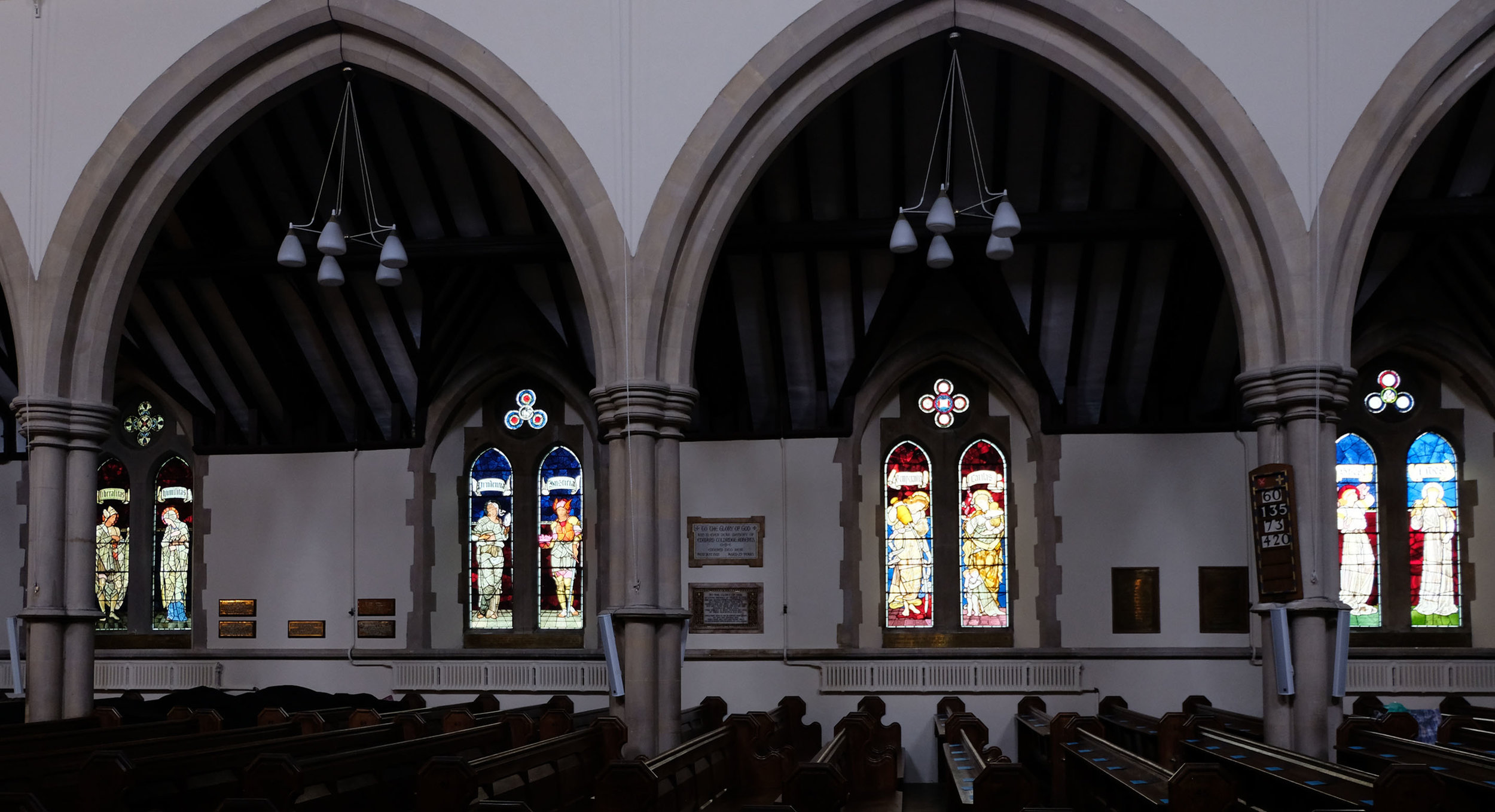North Aisle, left to right: Liberalitas & Humanitas (1899), Prudentia & Justitia (1885), Temperentia & Caritas (1876), Spes & Fides (1876)
I’ve rediscovered my enthusiasm for the stained glass of Morris & Company after visiting Christ Church in Southgate, North London. The windows in this church cover every period of the firm’s production from 1861 until the twentieth century, with designs by William Morris, Dante Gabriel Rosetti, Ford Madox Brown, Philip Webb and Edward Burne-Jones. The photos I’d seen were mainly those rare early windows designed, made and painted by the partners in the original firm, in the Victorian Medieval style i.e small figures engulfed by patterned borders and backgrounds. But the ones I really liked are shown in the photo below. There are pairs of figures in all the windows of the north and south aisle, they look great from a distance because of this consistency of design and are full of amazing detail and colour. Burne-Jones designed all except the figure of St. Francis which is the latest and is by Henry Dearle (1911).
Left: Detail from Liberalitas. Right: The figure of Justitia
The eight figures in the north aisle are all fantastic examples of the firm’s stained glass style as it developed, with gorgeous patterned backgrounds and drapery in Liberalitas and Humilitas (above left) and the use of amazing coloured glass, particularly in Justitia (above right.)
The next two pairs of windows were made earlier, the figures of Temperentia and Caritas are flowing and curvy, with a pair of astonishing babies, shown below left. The earliest two, Spes and Fides are plainer, calmer and they let in a lot more light.
Left: Babies at the feet of Caritas. Right: The figure of Fides
South Aisle, left to right: Patientia & Pax (1909), Martha & Phebe (1903), King David & St Francis (1911), St Peter & St Paul (1865).
The figures on the south side are all much darker, particularly the matching backgrounds. Below are details of two of the figures, with beautifully painted faces, hands and clothes. In the set of windows in this church the faces are all different and quite mesmerising. At the end of the row (above right) are earlier windows of Saints Peter and Paul with wildly patterned surrounds, they are figures familiar to me from other Morris & Co windows.
Left: The figure of Patientia. Right: The figure of Martha.
The other pair of windows that show the designs of EBJ at his flowing best are high up on the north wall of the chancel, apparently the first ones where he used photographic enlargement of drawings to prepare the stained glass cartoons. All in lovely light colours and with a great detail of a rip over the knee of the ragged girl (below right) visible even from a distance.
North chancel: Left, Dorcas. Right, The Good Samaritan (1876).




